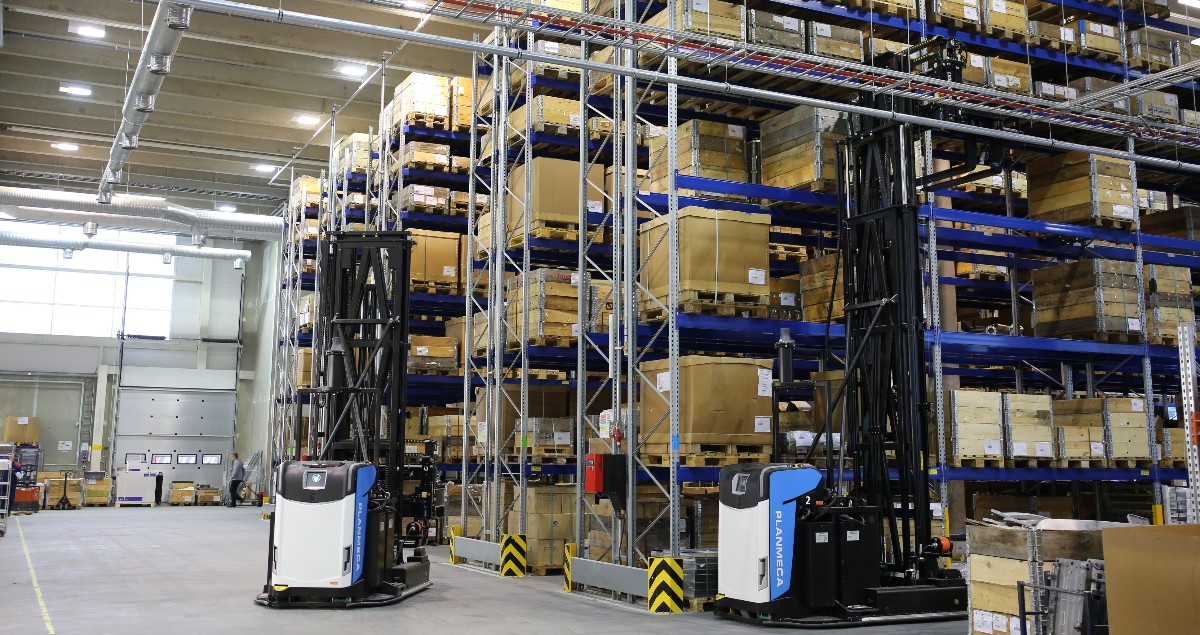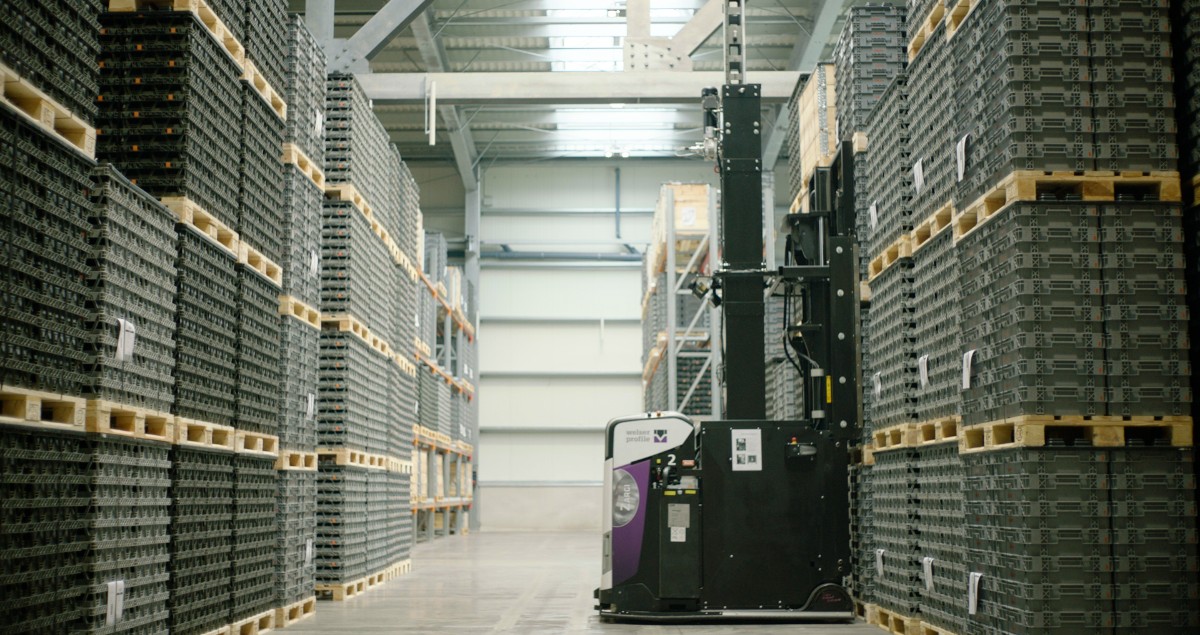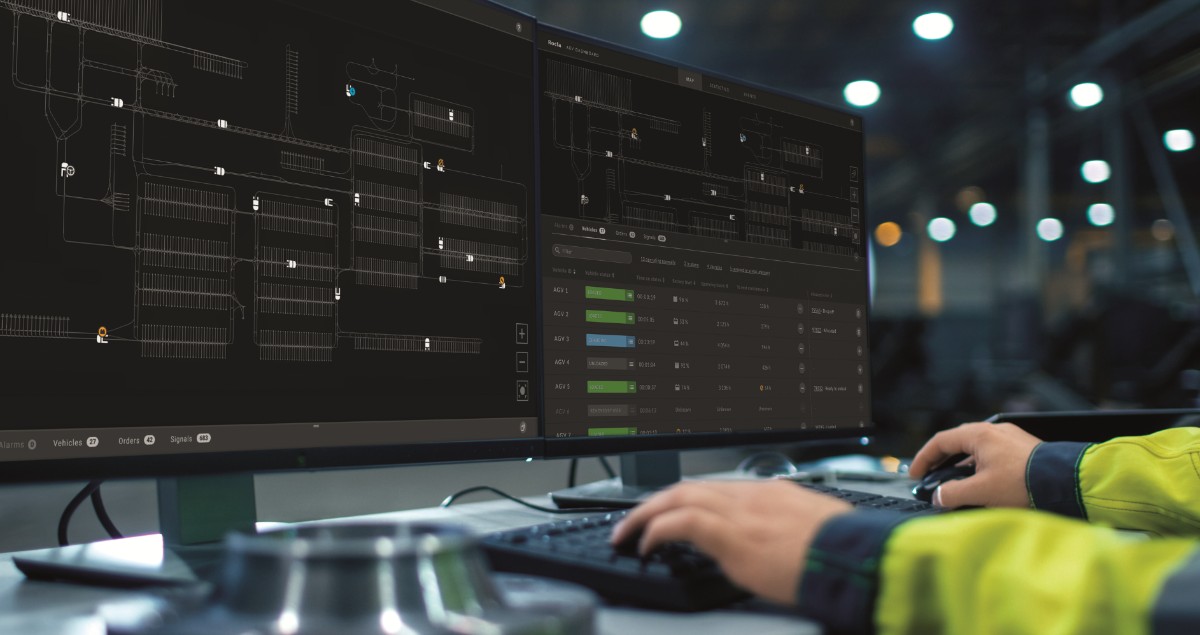What Are Automated Guided Vehicles (AGVs)?

Automated guided vehicles (AGVs) are materials-handling machines that are autonomous and driverless. They move goods around facilities such as warehouses, factories, and even hospitals.
AGVs are an increasingly popular solution for businesses grappling with a global labor shortage. Research by management consulting firm Korn Ferry shows the shortage could reach 85 million unfilled positions by 2030. The firm estimates this could cost businesses $8.5 trillion in revenue loss from being unable to keep up with production.
That reality turns the old fear that automation will take away jobs on its head. Instead of removing job functions to save money, organizations may actually have to turn to robots and automated technologies like AGVs to cover positions they can’t fill in the current labor market.
How do AGVs Work?
At its most basic definition, an AGV is a vehicle with an internal navigation system that allows it to move through its environment and perform the duties assigned to it. Navigation systems vary, from reflector tape read by sensors on the vehicle to more advanced laser navigation. The vehicle also uses distance calculations and turning angles to precisely determine its position in a mapped facility.
An AGV also needs to be instructed where to go, what materials to pick up and where to drop them off. That’s where software comes in, with central control systems assessing requests for goods, such as orders coming in, and then determining which AGV to send for each load.
This combination of driverless vehicle and intelligent fleet control software automates repetitive material handling tasks in a facility, improving efficiency and helping the human workforce keep up with production.

Examples of AGVs
So what does an AGV actually look like in use? The answer varies depending on industry and application.
For example, small vehicles can deliver medications, equipment and other supplies in a hospital. On the other end of the size spectrum, vehicles running in a factory or warehouse move palleted goods in loads weighing thousands of kilograms. These bigger machines transfer goods between inbound and outbound areas of the facility and can stack materials in racks several meters tall.
Whatever the need for material movement, there’s likely an AGV that can handle it.
AGV Advantages vs Driver-Operated Forklifts Advantages
AGV Advantages
The intent behind implementing AGVs in a facility is to take routine loads off the human workforce, freeing those drivers to handle other tasks.
“In North America and Western Europe, there’s a shortage of forklift drivers,” says Kari Johansson, Solutions Management Director at Mitsubishi Logisnext Europe. “The biggest solution automation provides is reducing repetitive tasks so those fewer human drivers can focus on more advanced jobs.”
Safety for the remaining human workforce is another major benefit to using AGVs. These vehicles have to adhere to strict safety standards and include both hardware and software solutions to prevent accidents. These include advanced sensors to spot obstructions and protocols in the control software to monitor AGV traffic in the facility so each vehicle can slow down or stop safely.

AGVs can also operate around the clock – a major advantage for organizations with heavy or increasing workloads. Smart battery management systems in each vehicle automatically send it to charge when it has no current task or when the battery gets low, further reducing stress on employees who might otherwise have to monitor power levels themselves.
Driver-Operated Forklift Advantages
While AGVs offer many benefits, especially when it comes to augmenting a smaller employee roster, some materials still require human drivers or intervention. Oversized or oddly shaped loads, for example, are better handled by human operators who can problem-solve on the spot.
This problem-solving also comes in handy when something unexpected comes up, such as maintenance or other work in the facility that might block an AGV’s normal route. Driver-operated forklifts are better suited to handle those spots until the blockage is cleared or the AGVs can be rerouted.
Another area where driver-operated forklifts may be a better option is in facilities with a lot of small spaces and tight corners – though products like Logisnext brand Rocla’s award-winnning ACT AGVs are designed to solve this problem by working in these tighter areas.
The bottom line is, AGVs aren’t meant to eliminate the human workforce in a factory or warehouse, but to operate as part of a hybrid system in which the AGVs handle tedious, repetitive tasks so humans can focus on more complex, interesting jobs.
What Is the Difference Between AGVs and AMRs?
Automated Guided Vehicles (AGVs) and Automated Mobile Robots (AMRs) may seem like the same thing – and they are very similar. The main difference lies in how they navigate a facility.
AMRs use their own onboard navigation and simple autonomous decision-making to map their environment, and are best suited for smaller, simpler applications that don’t require much variation in routes.
On the other hand, AGVs operate with a more sophisticated fleet manager software that pinpoints where each vehicle is at any time. With this information, the software can send the right vehicle on the right course to move a load in the most efficient way possible.
What Is an Automated Guided Vehicle System?

An AGV system comprises AGVs and the fleet manager software that controls their movement.
That software decides which AGVs do which tasks. It also determines the most efficient route for each task and recalculates the best route if a new task comes in. An AGV can’t do its job without that intelligence behind it. For example, Logisnext’s FleetController software uses AI-based algorithms to optimise traffic and the flow of goods.
“Think about traffic during rush hour,” says Johansson. “If you’re about to run into a traffic jam, you’d want to switch to the next quickest route to avoid it. That’s what software like FleetController does for AGVs.”
This system knows where each AGV is (and where it will be) in a facility, so during heavy-traffic periods it can spot potential traffic jams before they happen and reroute vehicles to avoid them. It also plans in advance in which order to deliver goods to meet required deadlines. This keeps materials flowing freely throughout the facility.
The amount of automation in the AGV system is also customizable, so you can create the perfect mix of human and automated vehicles to suit your unique facility’s needs.
Challenges like labor shortages aren’t going away soon. Solutions like AGVs supported by an advanced AGV system can help you get more done with less and free up your human workforce for more complex tasks.
Learn more about Logisnext
Or check out AGV applications to suit your business at Rocla-agv.com





